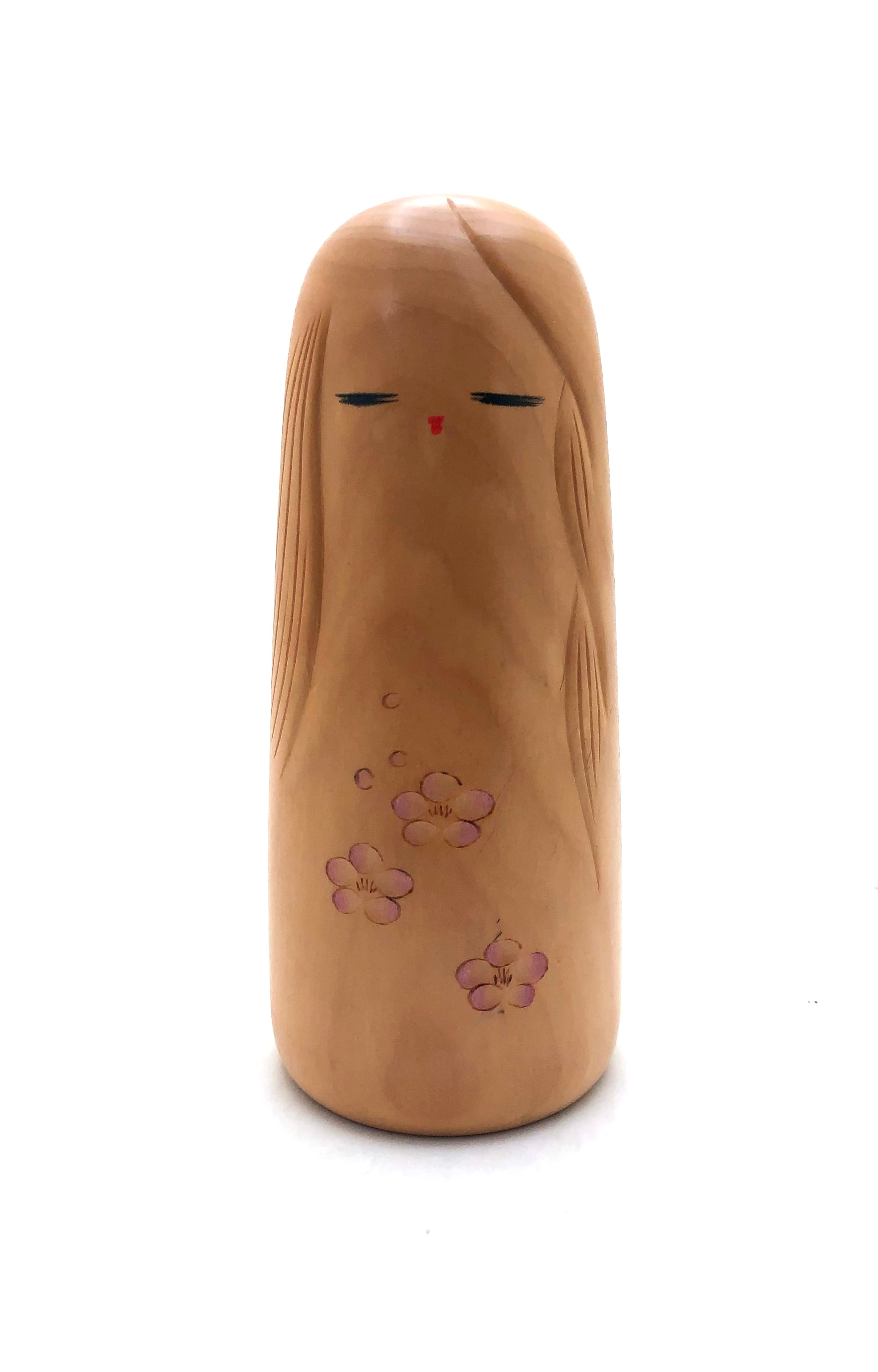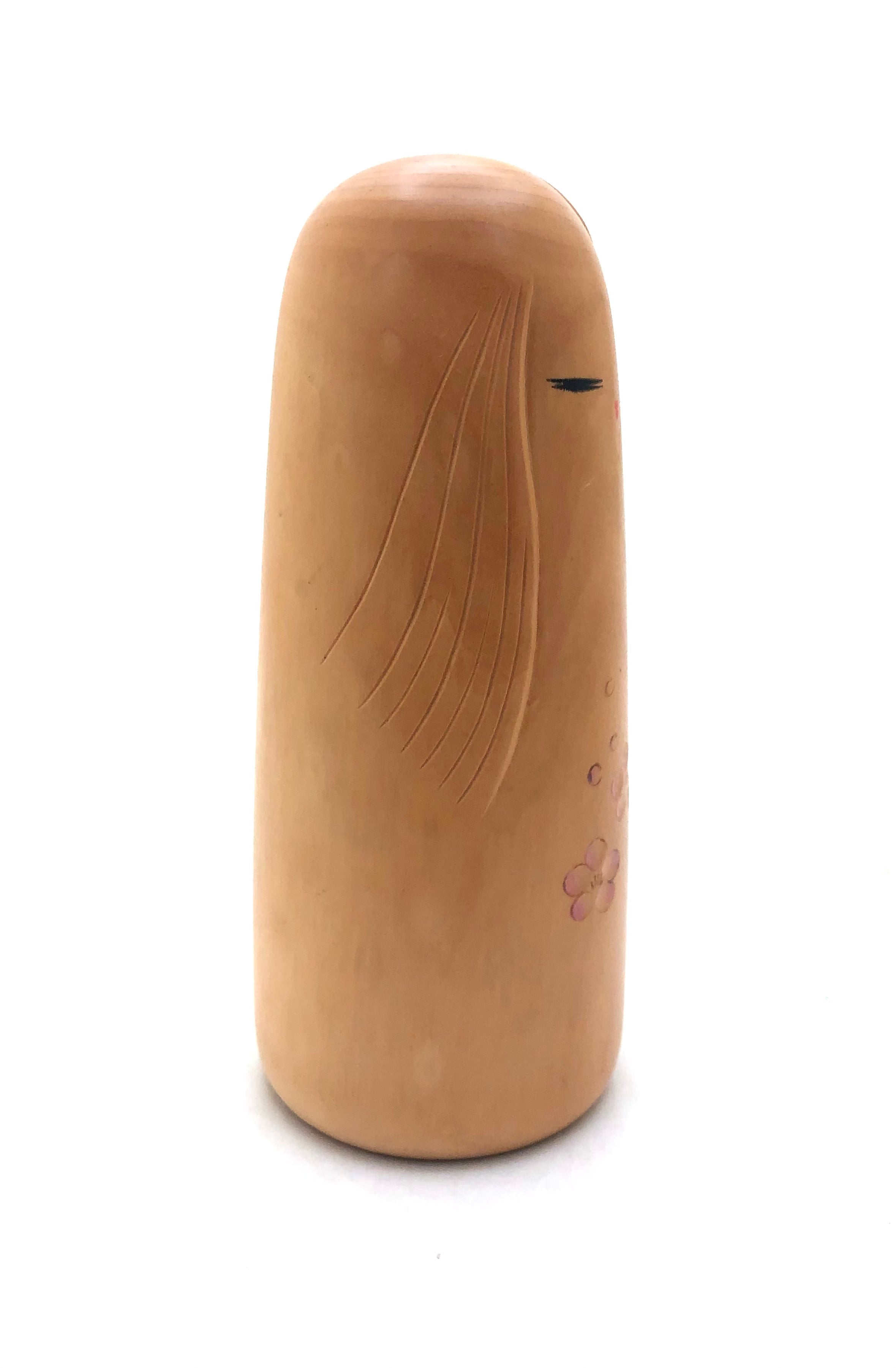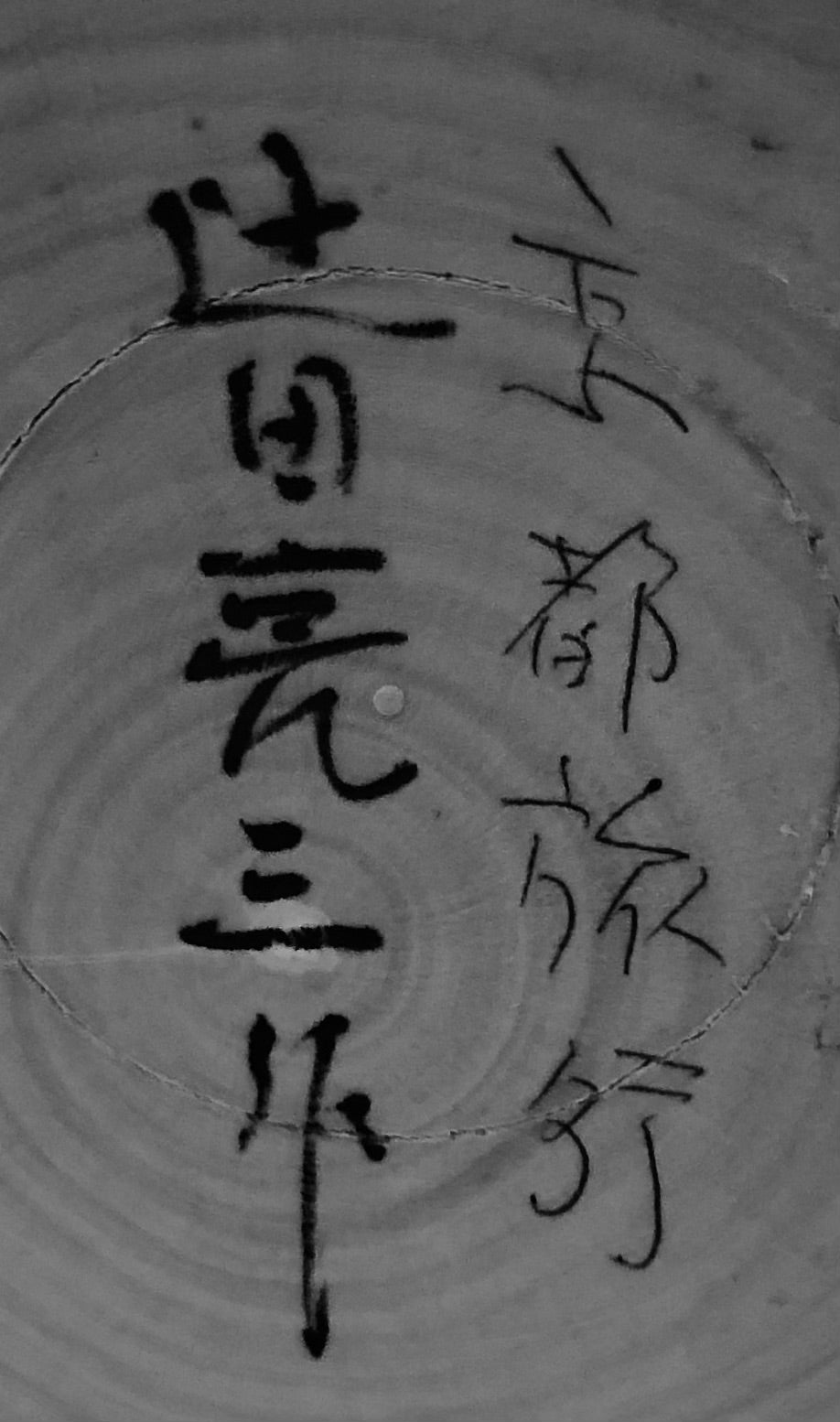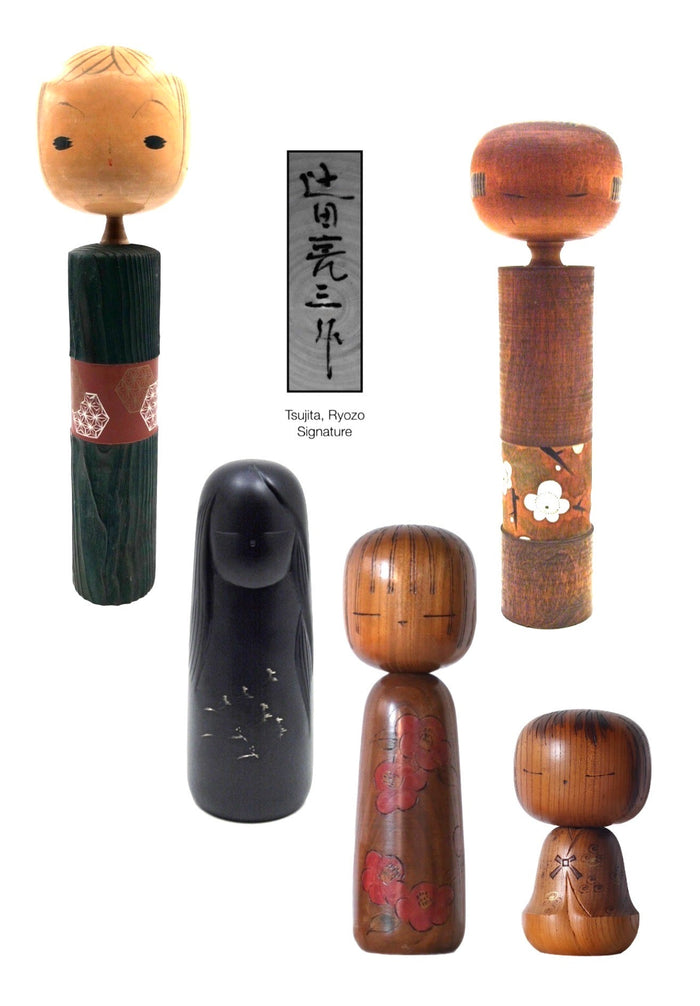


Vintage Sosaku Kokeshi entitled: “Sakura (Cherry Blossom)” by Tsujita, Ryozo
Dimensions: 7-1/4”
Offered is an elegantly designed doll representing a young girl. It is carved from one piece of Birch (Kabanoki) wood and sealed with a clear lacquer. She shows long, flowing unbound hair, (Taregami) on both sides of her face, with carved and detailed pink cherry blossoms. She exhibits expressive narrow eyes in black with a small red dot representing her nose. The doll is signed by the artist but additionally, there is an inscription identifying the title of the doll in pencil. This Kokeshi has been published in a book entitled: Sosaku Kokeshi: Celebrating the Major Artists of the Creative Movement, by Evans and Wolf, 2002.
Condition: Excellent meaning that the piece retains its original craft/workmanship showing a wonderful-developed patina commensurate with minimal wear from handling which corresponds to original Vintage Folk Craft. It meets all the standards of the collectible Sosaku Kokeshi.

Artisan
Woodworker: Tsujita, Ryozo
1923-D
Biographical History:
Born in Odawara City, Tsujita-san was drafted into the military during WWII, and was held captive in a Siberian Labor Camp in the Soviet Union until sometime in the late 1950s. Attempting to recover his lost youth, perhaps, Ryozo began making Sosaku dolls in 1959 inspired by the woodwork of Hakone craftsmen. He opened his studio and practiced his woodworking arts in his hometown of Odawara, where he began to make Kokeshi in 1963, an effort to make up for the loss of his childhood, and where he resided until his death. He was a member of the Modern Kokeshi Craft Artist Association and was a member of the Handicraft Society. A multi-award winner, he won the coveted Prime Minister’s Award in 1981. He is one of fifty, (50), local Sosaku artists featured in a small museum in nearby Hakone.
Collector's note – descriptive qualities, standard characteristics & ornamentation styles:
Many of his pieces are differently treated, with the natural contrasting head, and the natural grooved and stained body. He illustrates obi, inset into the doll with a hemp motif, (In early times, “asa” was an important source of cloth, and hemp leaves formed the basis of a variety of hemp patterns). History tells us that the ‘God of Hemp’ is revered at Oasahiko Shrine in Tokushima. He also broke the tradition of one turned and undulating form and began to make dolls using multiple bulbous parts that compose the body and head, utilizing different woods to express the desired detail. He additionally renders spring with cherry blossoms, wheat, trees, and stars to give character to his dolls. He seems to enjoy the rendering of long flowing unbound hair, (taregami), and details such as the inlay of silver motifs on the body. And finally it is unusual to see a doll made of three bulbous forms that compose the body and head, utilizing different woods to express the desired detail.
Explore & Learn More about Woodworker: Tsujita, Ryozo